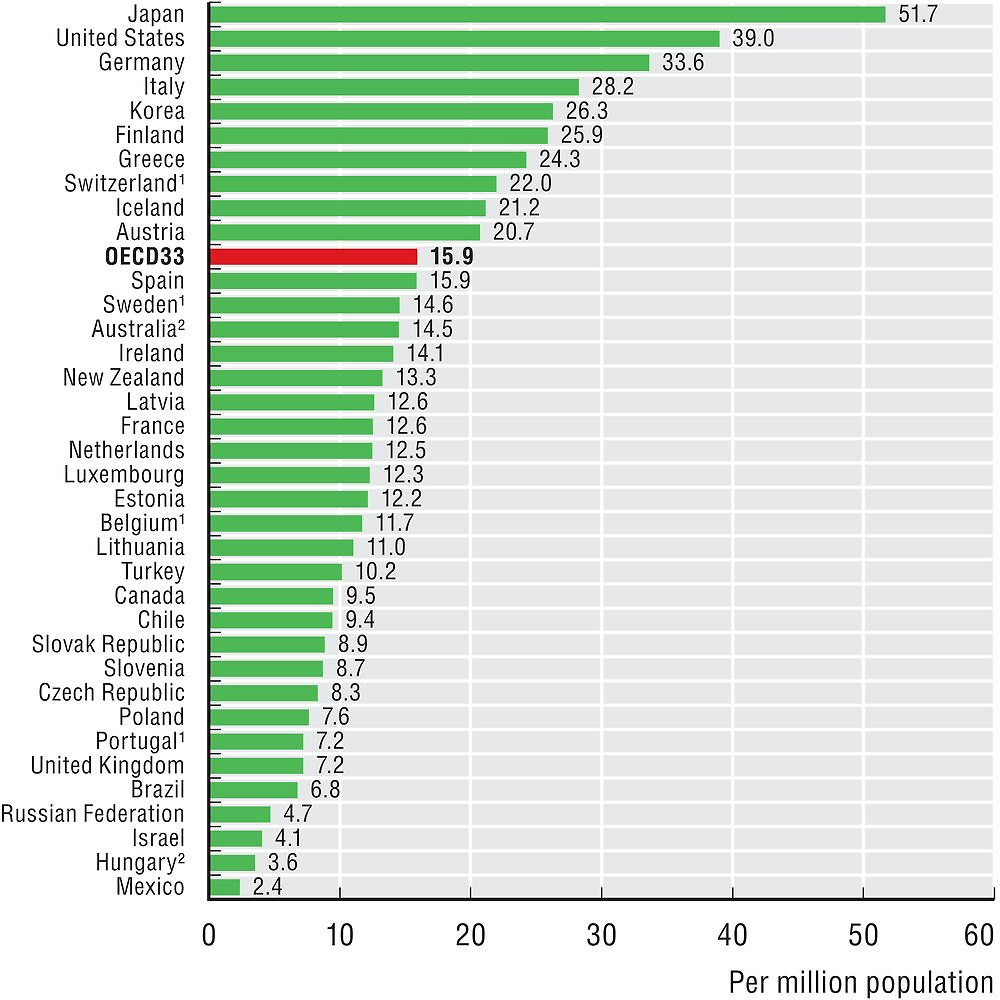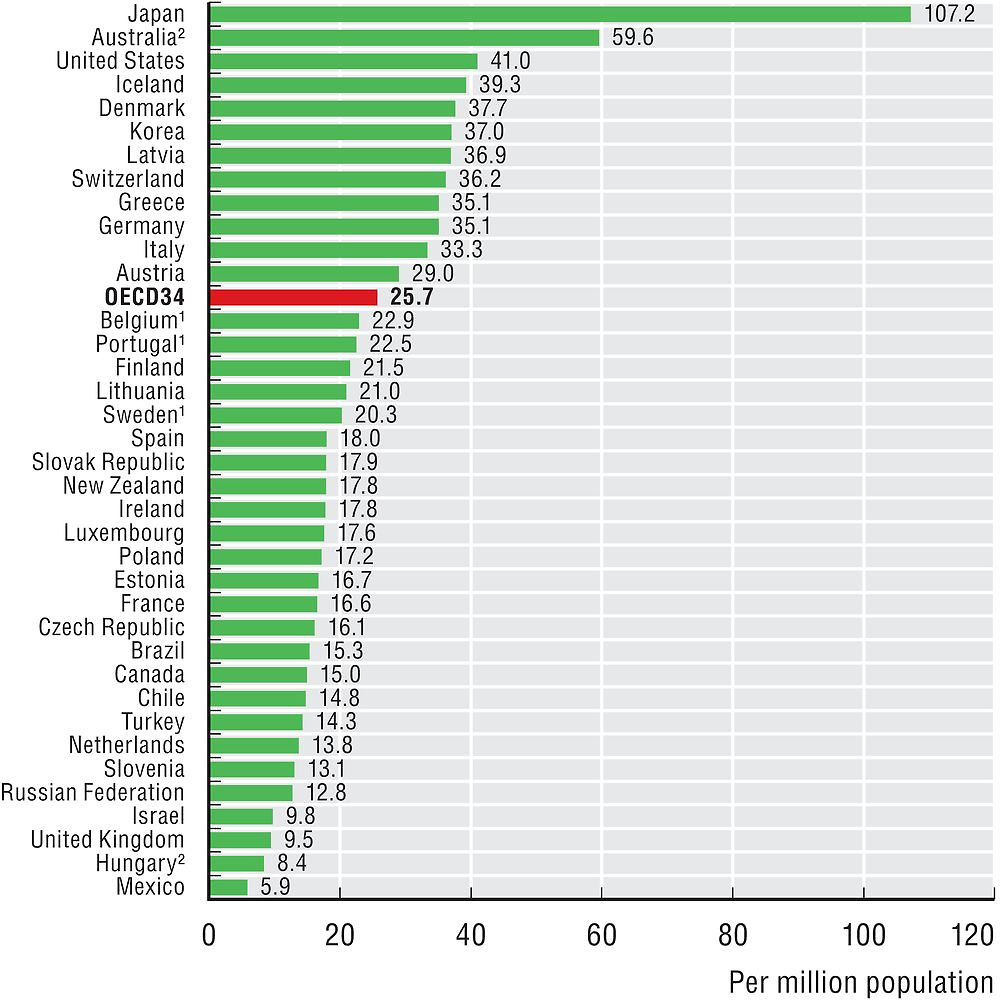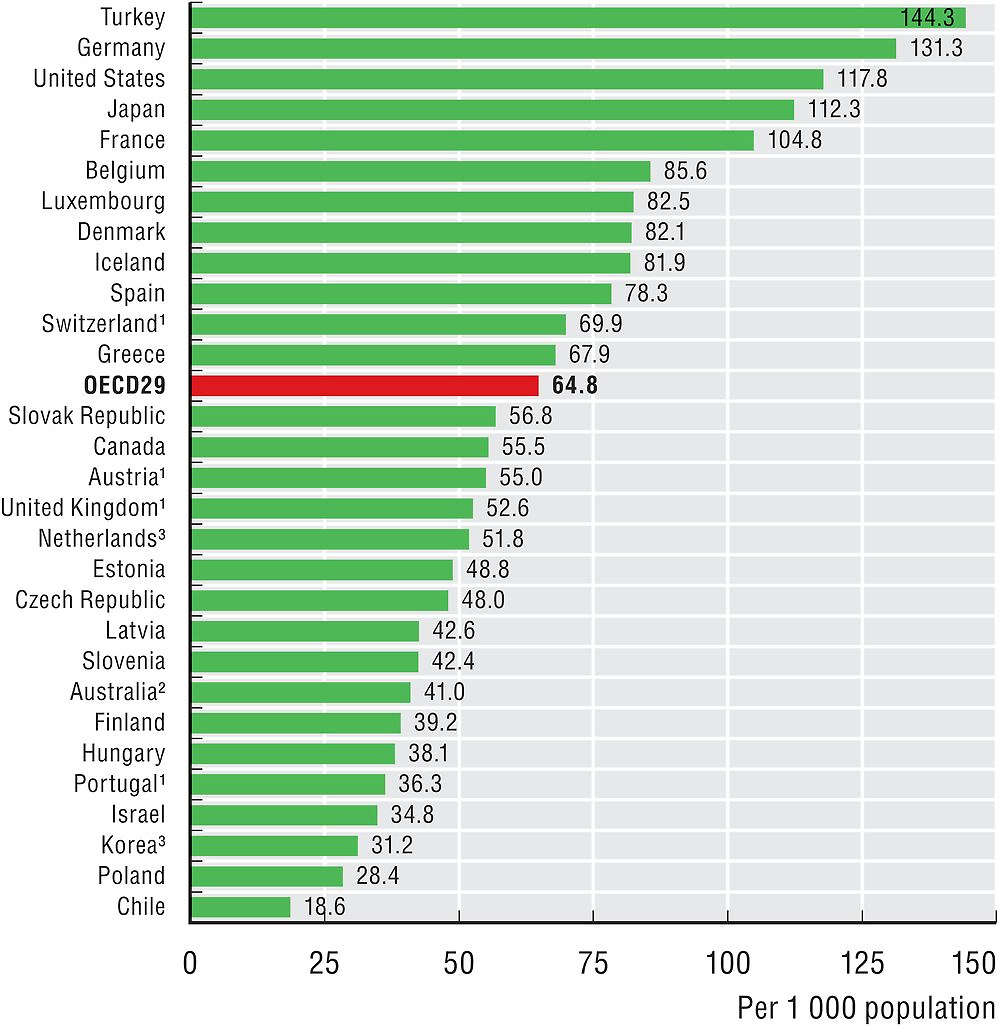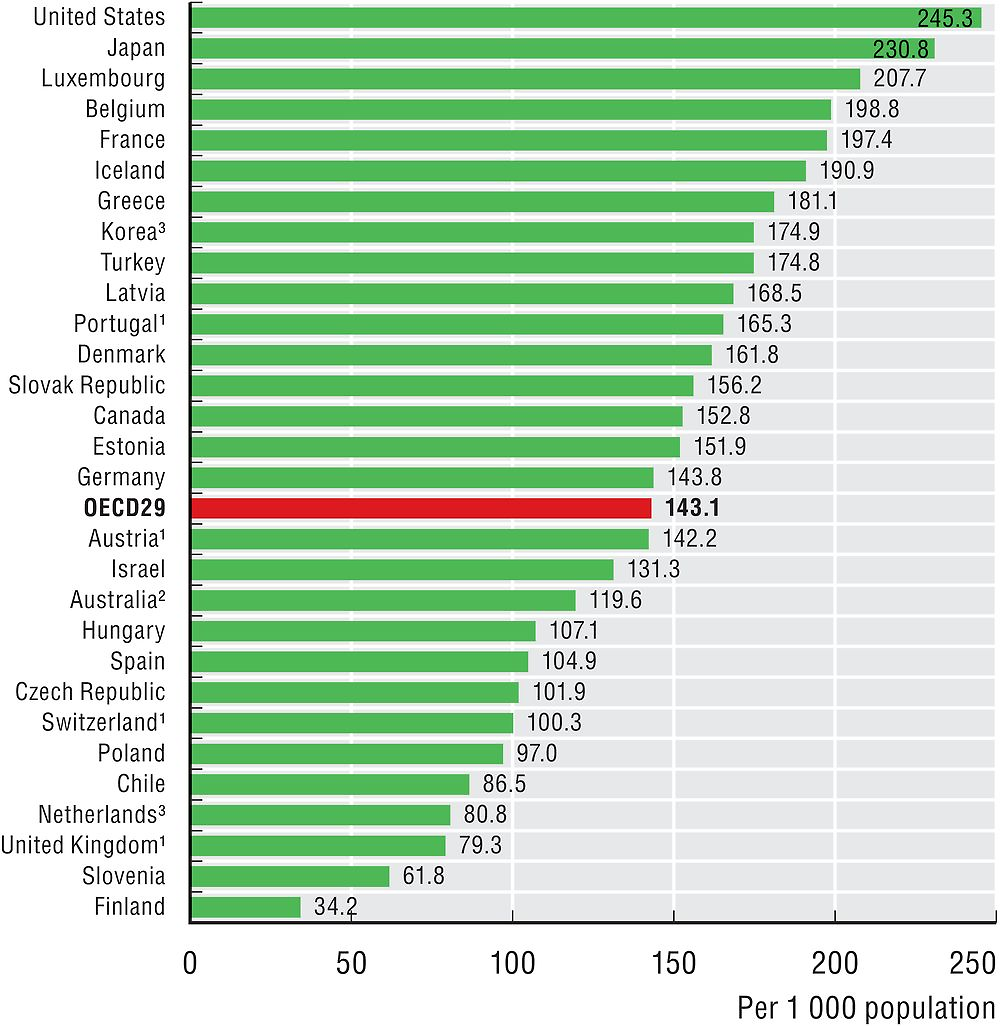Medical technologies
New medical technologies are improving diagnosis and treatment, but they are also increasing health spending. This section presents data on the availability and use of two diagnostic imaging technologies: computed tomography (CT) scanners and magnetic resonance imaging (MRI) units. CT and MRI exams help physicians diagnose a range of conditions. Unlike conventional radiography and CT scanning, MRI exams do not expose patients to ionising radiation.
The availability of CT scanners and MRI units has increased rapidly in most OECD countries over the past two decades. Japan has, by far, the highest number of MRI and CT scanners per capita, followed by the United States for MRI units and by Australia for CT scanners (Figures 9.3 and 9.4). Germany, Greece, Iceland, Italy, Korea and Switzerland also have significantly more MRI and CT scanners per capita than the OECD average. The number of MRI units and CT scanners per population is the lowest in Mexico, Hungary, Israel and the United Kingdom.

1. Equipment outside hospital not included.
2. Only equipment eligible for public reimbursement.
Source: OECD Health Statistics 2017.

1. Equipment outside hospital not included.
2. Only equipment eligible for public reimbursement.
Source: OECD Health Statistics 2017.
There is no general guideline or benchmark regarding the ideal number of CT scanners or MRI units per population. However, if there are too few units, this may lead to access problems in terms of geographic proximity or waiting times. If there are too many, this may result in an overuse of these costly diagnostic procedures, with little if any benefits for patients.
Data on the use of these diagnostic scanners are available for a smaller group of countries. Based on this more limited country coverage, the number of MRI exams per capita is highest in Turkey, Germany, the United States, Japan and France, all of which have more than 100 MRI exams per 1 000 population (Figure 9.5). In the United States, the (absolute) number of MRI exams more than doubled between 2000 and 2015. In Turkey, it has grown even faster, by three times between 2008 and 2015. In this country, there is growing evidence that MRI exams are being systematically prescribed for patients with various health problems, resulting in overuse of these tests. The number of CT exams per capita is highest in the United States, followed by Japan and Luxembourg (Figure 9.6).

1. Exams outside hospital not included.
2. Exams on public patients not included.
3. Exams privately-funded not included.
Source: OECD Health Statistics 2017.

1. Exams outside hospital not included.
2. Exams on public patients not included.
3. Exams privately-funded not included.
Source: OECD Health Statistics 2017.
There are large variations in the use of CT and MRI scanners not only across countries, but also within countries. For example, in Belgium, there was almost a two-fold variation in MRI and CT exams between provinces with the highest and lowest rates in 2010. In the United Kingdom (England), the utilisation of both types of diagnostic exams is generally much lower, but the variation across regions is greater, with almost a four-fold difference between the Primary Care Trusts that had the highest rates and lowest rates of MRI and CT exams in 2010/11. In Canada, there has been a strong rise in the use of both MRI and CT exams in all parts of the country over the past decade, but there continues to be wide variations across provinces (OECD, 2014).
Clinical guidelines have been developed in several OECD countries to promote a more rational use of MRI and CT exams. In the United Kingdom, the National Institute for Health and Clinical Excellence (NICE) has issued a number of guidelines on the appropriate use of MRI and CT exams (NICE, 2012). In the United States, a “Choosing Wisely” campaign has developed clear guidelines for doctors and patients to reduce the use of unnecessary diagnostic tests and procedures. The guidelines include, for instance, avoiding imaging studies such as MRI, CT or X-rays for acute low back pain without specific indications (Choosing Wisely, 2015). A similar “Choosing Wisely” campaign was launched in Canada in 2014, and work has also started in several other OECD countries to produce similar clear guidelines and recommendations to promote a more efficient use of diagnostic tests and other procedures. It is still too early to tell to what extent these campaigns will succeed in reducing the overuse of MRI and CT exams.
The data in most countries cover MRI units and CT scanners installed both in hospitals and the ambulatory sector, but the coverage is more limited in some countries. MRI units and CT scanners outside hospitals are not included in Belgium, Portugal, Sweden and Switzerland (for MRI units). For the United Kingdom, the data only include equipment in the public sector. For Australia and Hungary, the number of MRI units and CT scanners includes only those eligible for public reimbursement.
Similarly, MRI and CT exams performed outside hospitals are not included in Austria, Portugal, Switzerland and the United Kingdom. In Australia, the data only include exams for private patients (in or out of hospitals); while in Korea and the Netherlands they only include publicly-financed exams.
References
Choosing Wisely (2015), “Recommendations from the American Society of Anesthesiologists”, available at: http://www.choosingwisely.org/clinician-lists/american-society-anesthesiologists-imaging-studies-for-acute-low-back-pain/.
NICE – National Institute for Health and Care Excellence (2012), Published Diagnostics Guidance, available at guidance.nice.org.uk/DT/Published.
OECD (2014), Geographic Variations in Health Care: What Do We Know and What Can Be Done to Improve Health System Performance?, OECD Publishing, Paris, https://doi.org/10.1787/9789264216594-en.
